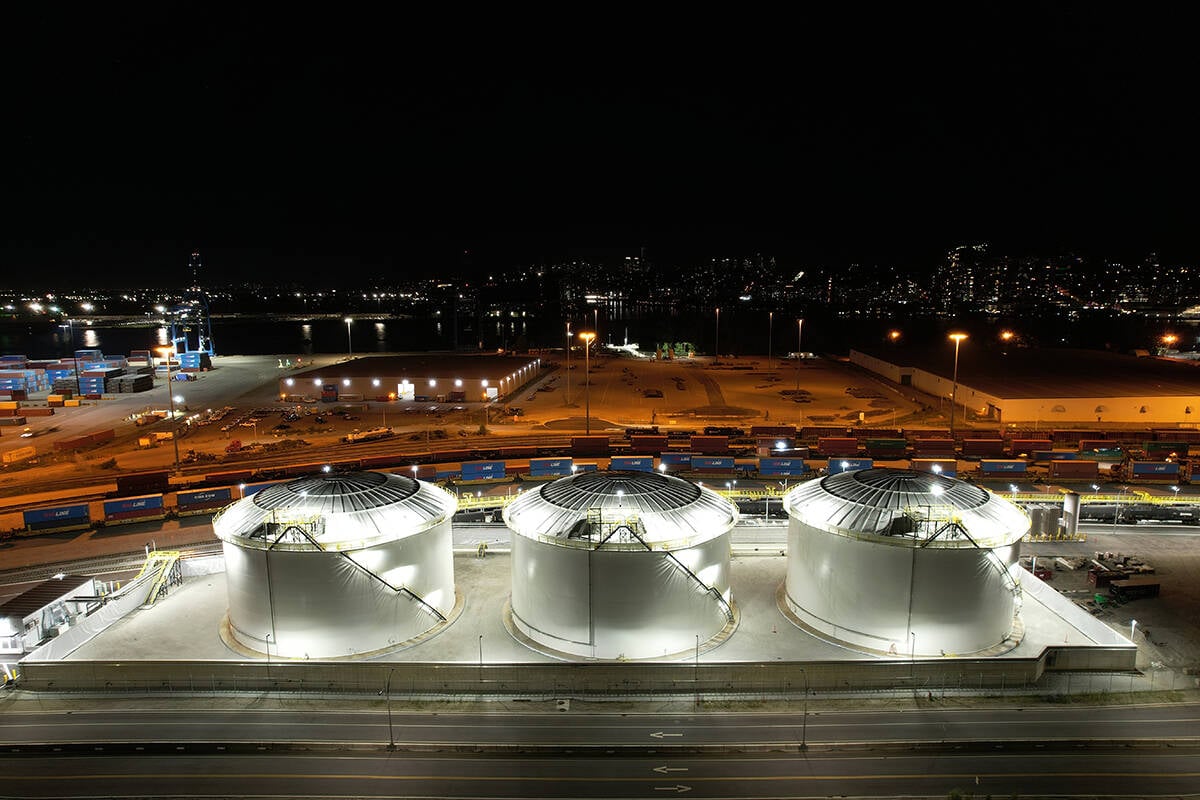Some Saskatchewan pulse processors take issue with the assumption that it’s time for the industry to take the next step up the value-added ladder.
They are referring to a remark made by University of Saskatchewan agriculture economist Murray Fulton, who was commenting on a 2002 special crops processors survey conducted by Saskatchewan Agriculture.
The survey shows that 97 percent of the processing done in the province is cleaning, bagging and bulk loading, and that relatively little further processing is taking place.
Fulton said it’s time for the industry to take the leap into more value-added activities such as colour sorting, splitting and milling of pulses.
Read Also

Canola oil transloading facility opens
DP World just opened its new canola oil transload facility at the Port of Vancouver. It can ship one million tonnes of the commodity per year.
But a number of established processors reject that suggestion. They say that side of the business is already overbuilt and that more competition will result in shrinking margins and more business closures.
“It’s a very competitive market as it is. You start bringing on more competitors in this business, nobody’s going to want to be in it,” said Tony Gaudet of Belle Pulses Ltd., a processor located in St. Isadore-de Bellevue, Sask.
Twenty-five years ago, Belle Pulses was the only pea splitting plant in the province. Now there are seven pea and lentil splitters, said Gaudet.
“If we get any more higher end processing here, we’ll all be doing nothing.”
Gaetan Bourassa, of Best Cooking Pulses in Regina, concurs that the splitting industry is overbuilt.
“We’ve got two plants just right here in Regina and we’re only running at about 50 percent capacity. And we’re not turning any business away,” said Bourassa.
“We elected to build a plant hoping for more business but it hasn’t come yet.”
He said there is a reason Saskatchewan Wheat Pool recently shut down its splitting facility in Saskatoon and that Agricore United isn’t building pulse processing operations across the province – there are too many plants already and profit margins are thin.
Gaudet points to the failure of two pulse processing plants in 2002 – Naber Seeds and Cancom – as proof that margins are tight. He predicts more attrition in the sector in the coming year and is calling for further regulation of the industry to protect farmers from additional mishaps.
“Ever since those two failures the (Canadian) Grain Commission has been a lot more strict, but I think they should be a lot stricter.”
Gaudet blames unrealistic business plans for industry overcapacity. Companies don’t take into account that existing firms will drop their processing fees when a new plant is erected in a nearby community.
“If they would have taken that into consideration a lot of these plants might not have been built. We’re not just going to roll over and play dead,” he said.
But if their wish is to curtail new construction, Gaudet and Bourassa will be disheartened to learn that according to the 2002 processor survey, 28 percent of the province’s special crops facilities plan to expand in 2003 and another 20 percent are planning expansions by the end of 2005.

















